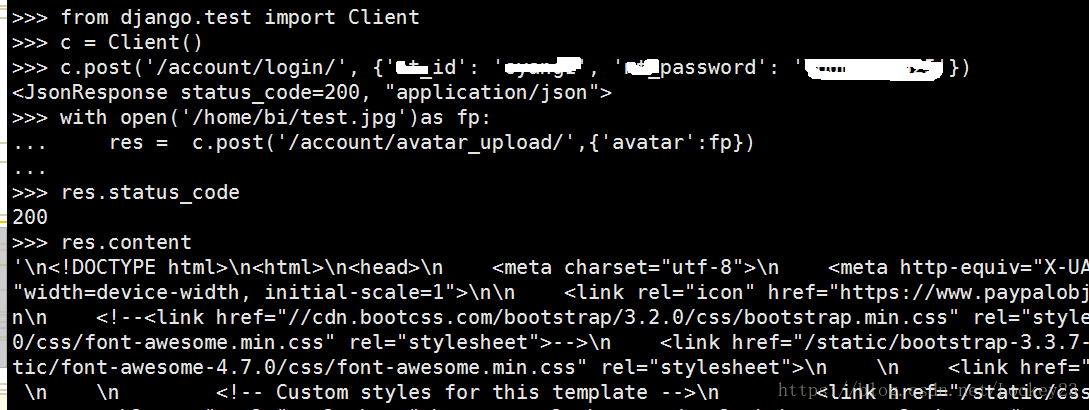值得收藏,Python 开发中的高级技巧
Python 开发中有哪些高级技巧?这是知乎上一个问题,我总结了一些常见的技巧在这里,可能谈不上多高级,但掌握这些至少可以让你的代码看起来 Pythonic 一点。如果你还在按照类C语言的那套风格来写的话,在 code review 恐怕会要被吐槽了。
列表推导式
>>> chars = [ c for c in 'python' ] >>> chars ['p', 'y', 't', 'h', 'o', 'n']
字典推导式
>>> dict1 = {'a': 1, 'b': 2, 'c': 3, 'd': 4, 'e': 5}
>>> double_dict1 = {k:v*2 for (k,v) in dict1.items()}
>>> double_dict1
{'a': 2, 'b': 4, 'c': 6, 'd': 8, 'e': 10}
集合推导式
>>> set1 = {1,2,3,4}
>>> double_set = {i*2 for i in set1}
>>> double_set
{8, 2, 4, 6}
合并字典
>>> x = {'a':1,'b':2}
>>> y = {'c':3, 'd':4}
>>> z = {**x, **y}
>>> z
{'a': 1, 'b': 2, 'c': 3, 'd': 4}
复制列表
>>> nums = [1,2,3] >>> nums[::] [1, 2, 3] >>> copy_nums = nums[::] >>> copy_nums [1, 2, 3]
反转列表
>>> reverse_nums = nums[::-1] >>> reverse_nums [3, 2, 1] PACKING / UNPACKING
变量交换
>>> a,b = 1, 2 >>> a ,b = b,a >>> a 2 >>> b 1
高级拆包
>>> a, *b = 1,2,3 >>> a 1 >>> b [2, 3]
或者
>>> a, *b, c = 1,2,3,4,5 >>> a 1 >>> b [2, 3, 4] >>> c 5
函数返回多个值(其实是自动packing成元组)然后unpacking赋值给4个变量
>>> def f(): ... return 1, 2, 3, 4 ... >>> a, b, c, d = f() >>> a 1 >>> d 4
列表合并成字符串
>>> " ".join(["I", "Love", "Python"]) 'I Love Python'
链式比较
>>> if a > 2 and a < 5:
... pass
...
>>> if 2<a<5:
... pass
yield from
# 没有使用 field from
def dup(n):
for i in range(n):
yield i
yield i
# 使用yield from
def dup(n):
for i in range(n):
yield from [i, i]
for i in dup(3):
print(i)
>>>
0
0
1
1
2
2
in 代替 or
>>> if x == 1 or x == 2 or x == 3: ... pass ... >>> if x in (1,2,3): ... pass
字典代替多个if else
def fun(x):
if x == 'a':
return 1
elif x == 'b':
return 2
else:
return None
def fun(x):
return {"a": 1, "b": 2}.get(x)
有下标索引的枚举
>>> for i, e in enumerate(["a","b","c"]): ... print(i, e) ... 0 a 1 b 2 c
生成器
注意区分列表推导式,生成器效率更高
>>> g = (i**2 for i in range(5)) >>> g <generator object <genexpr> at 0x10881e518> >>> for i in g: ... print(i) ... 0 1 4 9 16
默认字典 defaultdict
>>> d = dict() >>> d['nums'] KeyError: 'nums' >>> >>> from collections import defaultdict >>> d = defaultdict(list) >>> d["nums"] []
字符串格式化
>>> lang = 'python'
>>> f'{lang} is most popular language in the world'
'python is most popular language in the world'
列表中出现次数最多的元素
>>> nums = [1,2,3,3] >>> max(set(nums), key=nums.count) 3
或者
from collections import Counter >>> Counter(nums).most_common()[0][0] 3
读写文件
>>> with open("test.txt", "w") as f:
... f.writelines("hello")
判断对象类型,可指定多个类型
>>> isinstance(a, (int, str)) True
类似的还有字符串的 startswith,endswith
>>> "http://foofish.net".startswith(('http','https'))
True
>>> "https://foofish.net".startswith(('http','https'))
True
__str__ 与 __repr__ 区别
>>> str(datetime.now())
'2018-11-20 00:31:54.839605'
>>> repr(datetime.now())
'datetime.datetime(2018, 11, 20, 0, 32, 0, 579521)'
前者对人友好,可读性更强,后者对计算机友好,支持 obj == eval(repr(obj))
使用装饰器
def makebold(f): return lambda: "<b>" + f() + "</b>" def makeitalic(f): return lambda: "<i>" + f() + "</i>" @makebold @makeitalic def say(): return "Hello" >>> say() <b><i>Hello</i></b>
不使用装饰器,可读性非常差
def say(): return "Hello" >>> makebold(makeitalic(say))() <b><i>Hello</i></b>
总结
以上所述是小编给大家介绍的Python 开发中的高级技巧,希望对大家有所帮助,如果大家有任何疑问请给我留言,小编会及时回复大家的。在此也非常感谢大家对【听图阁-专注于Python设计】网站的支持!
